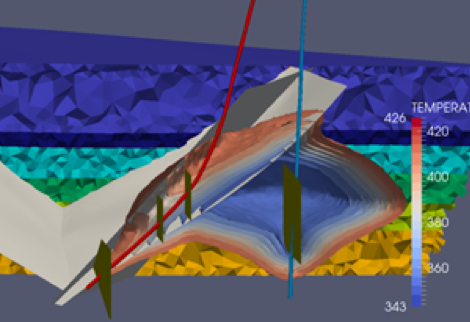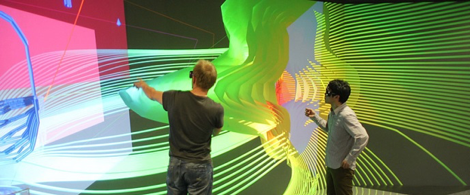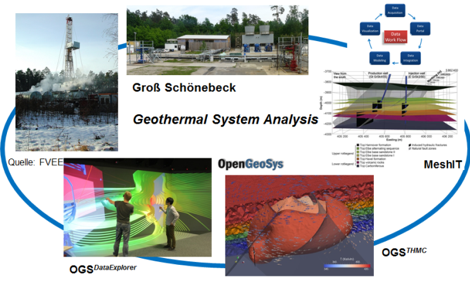Analysis of Enhanced Geothermal Systems in the North German Basin
POF 3 - Renewable Energy Program - Topic Geothermal Energy Systems
The numerical simulation of the EGS Groß Schönebeck has been conducted in close cooperation with our colleagues from the GFZ German Research Centre for Geosciences in Potsdam.



Related publications:
Magri, F., Cacace, M., Fischer, T., Kolditz, O., Wang, W., Watanabe, N., (2017): Thermal convection of viscous fluids in a faulted system: 3D benchmark for numerical codes. Energy Procedia 125 , 310 – 317
Watanabe, N., Blöcher, G., Cacace, M., Held, S., Kohl, T., (2017): Geoenergy modeling III : enhanced geothermal systems. SpringerBriefs in Energy, Springer, Cham, XII, 104 pp.
Jacquey, A.B., Cacace, M., Blöcher, G., Watanabe, N., Huenges, E., Scheck-Wenderoth, M., (2016):
Thermo-poroelastic numerical modelling for enhanced geothermal system performance: Case study of the Groß Schönebeck reservoir. Tectonophysics 684, 119 – 130
Blöcher, G., Cacace, M., Reinsch, T., Watanabe, N., (2015): Evaluation of three exploitation concepts for a deep geothermal system in the North German Basin. Comput. Geosci. 82 , 120 – 129
Jacquey, A.B., Cacace, M., Blöcher, G., Watanabe, N., Scheck-Wenderoth, M., (2015): Hydro-mechanical evolution of transport properties in porous media: constraints for numerical simulations. Transp. Porous Media 110 (3), 409 – 428
Bilke, L., Fischer, T., Helbig, C., Krawczyk, C., Nagel, T., Naumov, D., Paulick, S., Rink, K., Sachse, A., Schelenz, S., Walther, M., Watanabe, N., Zehner, B., Ziesch, J., Kolditz, O., (2014): TESSIN VISLab—laboratory for scientific visualization. Environ. Earth Sci. 72 (10), 3881 – 3899
Cacace, M., Blöcher, G., Watanabe, N., Moeck, I., Börsing, N., Scheck-Wenderoth, M., Kolditz, O., Huenges, E., (2013): Modelling of fractured carbonate reservoirs: outline of a novel technique via a case study from the Molasse Basin, southern Bavaria, Germany. Environ. Earth Sci. 70 (8), 3585 - 3602
